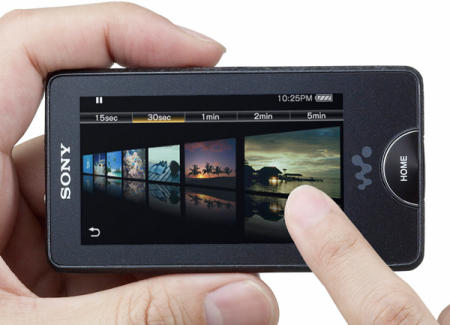Panasonic TC-P55VT50 Review
ProsA brilliant picture and a 600Hz refresh rate make this TV a solid competitor, even by 2D standards.
Cons
Only one pair of active 3D glasses is included with this television.
Features:
This Panasonic 3D TV is a fully featured three-dimension machine. It has all the basic hookup capabilities, including one composite and one component video input, as well as digital and analog audio inputs and outputs. These are clearly labeled on the back of the television. You can connect your 3D TV to your personal computer and your local area network. The TV also has three USB ports and four HDMI inputs for your DVD player, your 3D Blu-ray player and all your gaming systems. You don't have to worry about unplugging your Xbox to hook up your Blu-ray player; there is plenty of room for all your connection needs.
This Panasonic 3D TV is a fully featured three-dimension machine. It has all the basic hookup capabilities, including one composite and one component video input, as well as digital and analog audio inputs and outputs. These are clearly labeled on the back of the television. You can connect your 3D TV to your personal computer and your local area network. The TV also has three USB ports and four HDMI inputs for your DVD player, your 3D Blu-ray player and all your gaming systems. You don't have to worry about unplugging your Xbox to hook up your Blu-ray player; there is plenty of room for all your connection needs.
Those basics are to be expected. More importantly and excitingly, this television is capable of converting two-dimensional images into immersive, three-dimensional environments. This is made possible by technology unique to Panasonic's line of Viera HDTVs that produces detailed, 3D depth for 2D images. With this conversion feature, you can watch DVDs, Blu-rays and ordinary television broadcasts in three clear dimensions. However, when you use your TV to convert 2D images into 3D, the 3D effect is marginally less pronounced than when you enjoy material from 3D sources on your TV. This 3D TV also has a game mode for decreased lag and increased clarity, and intuitive settings to provide the best images possible, even in dark scenes.
Display:
As one of the only plasma HDTVs on our lineup, this Panasonic 3D TV has an incredibly high refresh rate of 600Hz. The television uses its 600Hz subfield drive to cultivate the best possible picture in either 2D or 3D mode. Most LED TVs have a refresh rate of up to 480Hz, tops. Like all plasma TVs, this one displays images using electrically charged ionized gases instead of light-emitting diodes. Plasma TVs are thin and can create rich colors and deep blacks. This 3D TV and all Panasonic HDTVs also use fast-switching phosphors that reduce afterglow and create clear images.
We reviewed the 55-inch Panasonic, but the Viera VT line also has a 65-inch model for consumers who are especially ambitious about their home theaters. It has excellent resolution, 1920 x 1080. The TV's default aspect ratio is the standard HDTV wide-screen 16:9. However, you also have aspect control so you can zoom in for traditional 4:3 broadcasts. The aspect ratio is the measurement of the TV's width compared to its height.
This 55-inch Panasonic has a contrast ratio of 2 million pixels to one, and a viewing angle of 178 degrees. The contrast ratio indicates the contrast of the brightest white the TV can produce to the darkest black. The scale of this measurement is not universal; it varies with each manufacturer. The viewing angle refers to the maximum angle at which you can effectively view 3D and HD images. The three-dimensional effect is greater on the Panasonic 3D TV the further you are from the television. As you increase this distance, the images seem to have greater depth and the 3D seems more realistic.
Accessories:
The Panasonic 3D TV does not come with any active 3D glasses. The glasses aren't too heavy and are perfectly fashionable, as far as 3D glasses go. Some vendors include additional pairs of glasses as well as other accessories in one all-inclusive bundle. The television also comes with a tabletop stand that measures 1.5 inches tall, and a Viera Touch Pad controller, compatible with most of your connected devices. It also features built-in Wi-Fi.
You can find and download the owner's manual and installation guide for the Panasonic 3D TV on the Panasonic website.
Help & Support:
Panasonic has an outstanding line of customer help and support. At the top of any window in which you're browsing through products, you can click on the Get Support tab and search for your product by model number, keyword or product type. Once you select the product of your choice, you are provided with a lineup of support including operating instructions, help and tutorials, a comprehensive selection of FAQs, technical specs, parts and accessories, and more. Here you can also review the warranty options. Panasonic provides a one-year warranty on their 3D TVs, but you can purchase additional coverage of two or three years if you so choose.
You can contact Panasonic directly via phone, mail, email or their convenient live chat option. The representatives we spoke with on Panasonic's live chat support were attentive and quick to answer our questions competently and completely. They also email you a transcript of your live correspondence so you can file it away for future reference.
Summary:
With technology ever improving, it's senseless to spend your hard-earned entertainment budget on a 3D television that is already trumped by a more advanced option. Invest in a top-of-the-line 3D machine. We recommend the Panasonic TC-P55VT50 because it is simply the best 3D TV on the market from the leading name in 3D technology. We found that its picture is superior to other models and its 3D is the most lifelike. This plasma television has an astounding color variety, deep blacks and bright whites. Panasonic is a name you can trust with a reputable line of customer service to back it up. If you want three dimensions in your entertainment, this is an investment worth making.


























